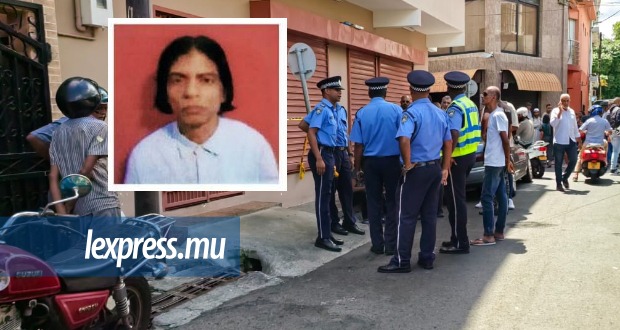Publicité
Labour Day : Remembering the Martyrdom of Anjalay
Par
Partager cet article
Labour Day : Remembering the Martyrdom of Anjalay

Dr Satteeanund Peerthum & Satyendra Peerthum
Labour Day is when the Mauritian nation remembers the great contribution of the Mauritian workers in making this island a vibrant and democratic country. It is also a very special occasion when the struggle of the Mauritian workers to obtain better working and living conditions as well as greater political representation and the right to vote is commemorated.
During their long and arduous crusade, a handful of valiant Mauritian workers gave their lives, such as Anjalay Coopen and her slain companions at Belle Vue Harel Sugar Estate, in September 1943, in the name of freedom and in the fight against colonial tyranny.
● The Events of 1943. In January 1943, around 100 labourers from Belle Vue Harel Sugar Estate organized a hunger march. During the same month, marches of a similar type were organized by workers in different parts of Rivière du Rempart as well as in Triolet and Grand Bay. In early April 1943, the workers from Labourdonnais Sugar Estate organized a work stoppage.
During the following days and weeks, as the time of sugar harvest was fast approaching, workers on several sugar estates such as Mon Choix, Mon Piton, Beau Séjour, St. Antoine, and Belle Vue Harel went on strike. The labourers asked for a wage increase so that they may be able to better feed their families. Hurryprasad Ramnarain, Sharma Jagdambee, and the other members of the North and Central Rivière du Rempart Labourers Industrial Association played an important part in helping the workers to organize these labour strikes.
In July 1943, the number of strikes increased and negotiations between employers and employees continued. However, at the same time, the island?s colonial police resorted to brute force to end some of work stoppage with the blessings of the Department of Labour. In September of the same year, a major strike began at Belle Vue Harel Sugar Estate which would last for several days. Just like on the other estates, the labourers demanded a wage increase and their interests were represented by Ramnarain and Jagdambi.
The sugar estate owners and Labour Department inspectors put tremendous pressure on the two labour union leaders to sign an accord which would end the strike. Without consulting with the workers, Ramnarain and Jugdambi accepted the proposals of the owners of Belle Vue Harel with the strong support of the Labour Department and the Conciliation Board.
In Promises to Keep, Uttam Bissoondoyal accurately explains: ?Ramnarain was caught in his conflicting roles; he worked as a propagandist within the Department of Information and therefore could not really oppose his Head, the Acting Director of Labour who was the Chairman of the Conciliation Board.?
Fortunately, the striking labourers of Belle Vue Harel were wise and dignified enough to flatly reject the agreement which had been reached and they decided to continue their work stoppage. The sugar estate owners announced that workers, who would not abide by the agreement and end their strike, would have to leave the sugar estate by 29 September.
● The Belle Vue Harel Massacre. With each passing day, the situation became tense at Belle Vue Harel, as the owners of that sugar estate, the Department of Labour and the local police were bent on ending the strike by whatever means necessary. Despite a deadline hanging over their heads, the labourers of Belle Vue Harel continued their strike. On 27 September, the workers organized a baithka or prayer meeting on the grounds of the estate itself. A fight broke out, the crowd became restive and in panic, the police opened fire. As a result, three individuals perished and thirty-two were wounded on the spot. Among the dead was a ten-year-old boy and a pregnant woman.
It is evident that 27 September 1943, is a date which shall forever live in infamy in the annals of Mauritian history, when three previously unknown labourers became martyrs of the Mauritian labour movement. In addition, these slain soldiers of our country?s working class have become a source of inspiration and their valiant resistance to tyranny has served as a strong example to two generations of Mauritians.
● A Profile of Anjalay. On 27 September, the adult female labourer who was killed was Anjalay Tassalam Twakaran, or better known as Anjalay Coopen. The lady martyr of Belle Vue Harel was born under the name of Soondrun Pavattan on 3rd March 1911 in Rivière du Rempart district where she spent her entire life. During the early 1940s, she resided in the estate camp of Belle Vue Harel and worked in the petite bande.
When Anjalay was brutally slain in September 1943, she was thirty-two years old and pregnant with her first child. She was recorded as being dead on 28th September of the same year in Pamplemousses and during the following day, she was cremated in Cottage along with two of her fallen comrades.
It should be noted that great personalities such as Basdeo Bissoondoyal, Sookdeo Bissoodoyal, Pandit Soobrayen, and R.K.Boodhun paid tribute to this great lady. Today, more than six decades later, the martyrdom of Anjalay still remains a powerful symbol of the ultimate sacrifice which some brave Mauritian workers were willing to make during the early period of the Mauritian labour movement.
Through her death, she became the mother of all Mauritian workers who has taught her fellow countrymen and women the importance of resisting tyranny, the struggle for one?s rights, and the dedication to a cause, even if it means sacrificing one?s own life for the noble cause of freedom. In 1995, a statue was erected in her honour at the Aapravasi Ghat site in Port Louis, the same place where her ancestors first set foot on Mauritian soil.
● Bissoondoyal?s Tribute to Anjalay. Two days after the shootings at Belle Vue Harel, Pandit Basdeo Bissoondoyal, the leader of the Jan Andolan (People?s Movement), took charge of the funeral ceremony of Anjalay and her slain companions. The night before arriving in the district, Jugraj Bhuckory came in a taxi to take Professor Bissoondoyal to Belle Vue Harel. Many years later, Bhuckory distinctly recalled during that trip from Port Louis, Bissoondoyal was in deep reflection over the massacre which had shocked the entire island. The leader of the Jan Andolan vowed that never again would Mauritian labourers be treated in such a terrible and inhumane manner.
At the funeral ceremony, more than 1500 individuals gathered as Basdeo Bissoondoyal stood in front of the bodies of Anjalay and her fallen companions and asked Brajnath Madhav, his good friend, to recite a few verses from Hindu scripture. Shortly after, Bissoondoyal proclaimed his sermon and he eulogized the great heroism which Anjalay Coopen and the other victims of the Belle Vue Harel massacre had shown during their last moments on earth.
Over the past six decades, the martyrdom of Anjalay Coopen has been remembered during the annual Labour Day celebrations. Every year, on 1st May, the noble sacrifice of this great martyr of the Mauritian labour movement as well as that of her fallen comrades must be remembered and honoured.
Publicité
Les plus récents






